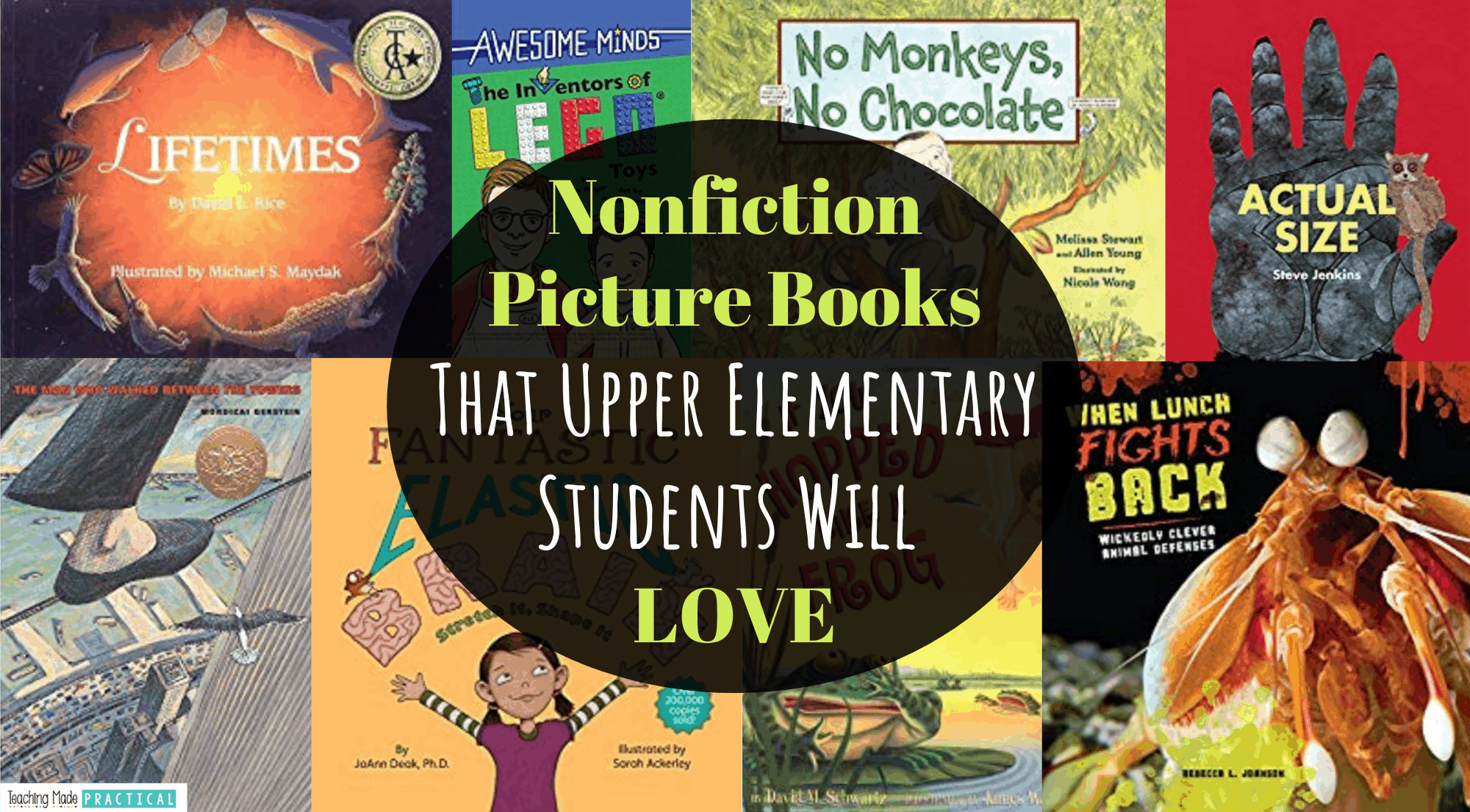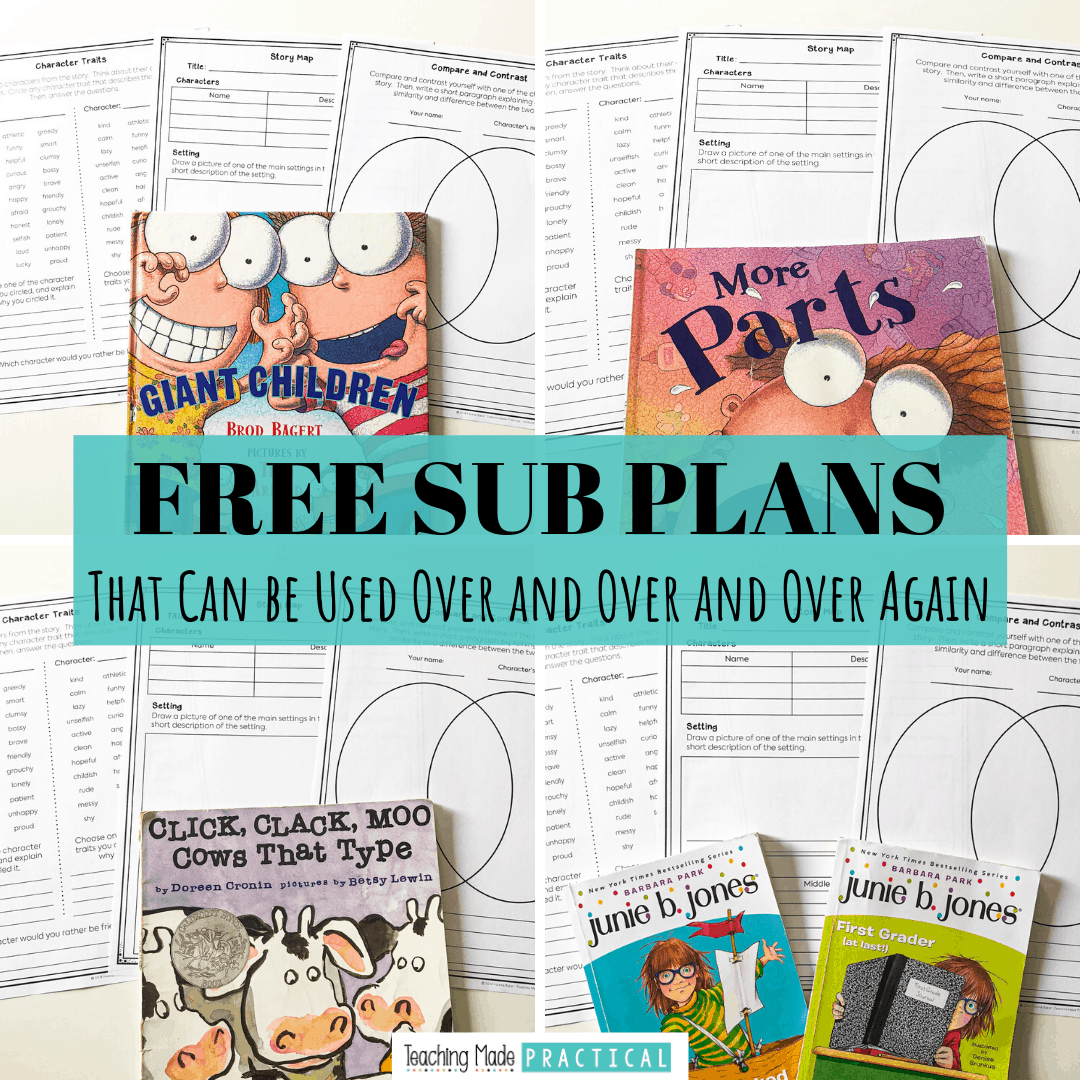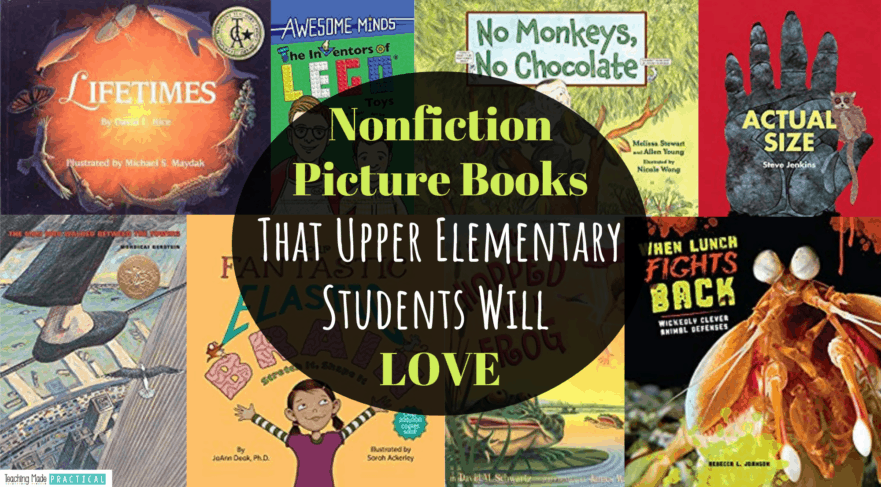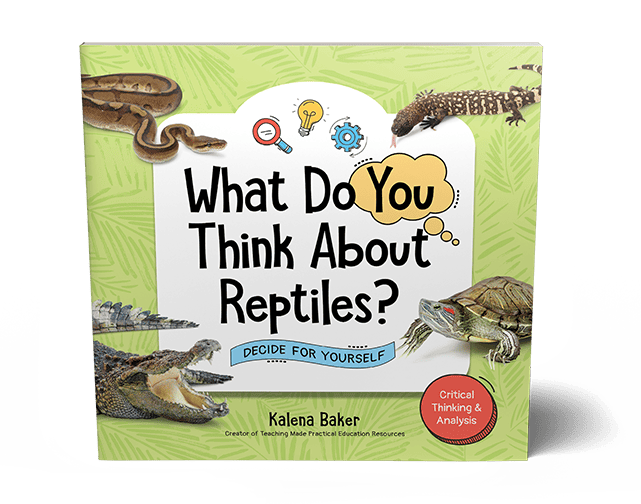
Engaging fiction picture books are easy to find. 3rd, 4th, and 5th grade teachers usually have plenty of them in their classroom libraries. However, nonfiction and informational text picture books that are actually engaging and on an appropriate grade level are much harder to find.
If you are trying to be intentional about doing more nonfiction read alouds with your class, then, check out these 12 books that are sure to keep your students interested!
Sometimes I recommend products using affiliate links. If you click through and buy, I may be compensated at no cost to you.
12 Informational Picture Books for 3rd, 4th, and 5th Grade Classrooms
If you are looking for a unique nonfiction book that will draw your students in, look no further! This reptile book has a lot of interesting animal facts...but it's really not about the reptiles! It's about encouraging students to think for themselves.
This book presents opposing views on each reptile, helping kids spot author bias, analyze arguments, and form their own opinions - all in an engaging way! Your students will love considering both sides of the arguments and then deciding for themselves what they believe!
Your athletic students - especially the ones that play basketball - will love reading about the first basketball game ever played.
This book tells the true story of James Naismith and his P.E. class. In an attempt to keep his boys engaged and playing games that didn't involve tackling each other, he invented a new game that eventually spread around the world.
This book can easily be read in one sitting. The vocabulary will not be very challenging to upper elementary students, but the story is engaging.
This book tells about some crazy ways animals defend themselves from predators! Your 3rd, 4th, and 5th grade students - and particularly the boys - will love this book and its great photographs.
They will learn about:
- the hagfish's slimy defense
- a blue spotted termite's toxic bubble
- the hoopoe chick's poop defense
- the dangerous, punching mantis shrimp
- and more!
Some of these defenses are so strange that they seem made up!
If your students like this book, they might also like this book list for kids that love animals.
This book is all about the brain! It gives information about the parts of the brain and how the brain functions. It can help your 3rd, 4th, and 5th grade students develop a growth mindset as well. It discusses how the brain is a muscle, and that trying hard things and making mistakes can help it grow.
This book has a lot of information, so it might be a little long to read in one sitting. Use these Nonfiction Reading Response Activities with this book - or any nonfiction book - as a meaningful way to engage your students with the text without the prep!
This is a biography about Nikola Tesla. It tells about his curiosity and creativity as a child. It also explains his determination to harness the power of alternating current even after being told he would never do it.
Your upper elementary students are probably more familiar with his competitor, Thomas Edison. This book discusses the interesting rivalry between these two inventors, and how their inventions changed the world.
You might also like these other engaging biographies and autobiographies.
This is an easier read than most of the books on this list. However, your students will find it fascinating and it lends itself to fun math discussions.
This book is all about proportions. If people were able to hop like a frog, we could jump from home plate to first base in one giant leap (since a frog can jump 20 times its own body length).
The "Dear Reader" note at the beginning is definitely worth reading, and sets the stage for a discussion of proportions and math.
This is the true story of a man who threw out a tightrope between the two World Trade Center towers and spent an hour dancing and performing on the tight rope.
It mentions how the World Trade Center towers are no longer there, which might be an opportunity for you to talk with your 3rd, 4th, or 5th grade students about September 11th if you wish.
It also talks about he snuck into the towers, and that he ignored policeman who were calling for him to get off the tightrope. Eventually, however, he submitted to them peacefully and accepted his consequence. This might lead to some interesting conversation about rules and why they are enforced.
This is another fairly easy read that will fascinate your students. It shows pictures of the actual size of different animals or animal body parts. For example, it has an illustration of a giant squid's eye, which can be up to 12 inches in diameter.
This would be a great book to integrate into lessons on measurement. Many of the facts in the book are more interesting when students can actually understand how big, how small, or how heavy the animal is.
If you have chocolate loving students in your class, then they will love how monkeys help make chocolate possible.
This book explains the important parts of a cocoa tree. It talks about the different parts of a cocoa tree - cocoa beans, flowers, stems, pods, and more. It also explains how things like fungi, maggots, and monkeys help keep cocoa plants alive.
Chris Van Allsburg is known for his fanciful stories like Jumanji and The Polar Express.
This book, however, is the true story of Annie Taylor, the first person that survived a trip over Niagra Falls in a barrel.
Her life and dreams make for a very interesting story. She completed this stunt in hopes of making money off of it, but she didn't make very much.
This book would make for a very interesting discussion with your upper elementary students. Was this a wise idea? Did she accomplish her dreams? What else could she have done to make money? Your students will most likely have a variety of different opinions.
If you are doing an author study of Chris Van Allsburg, this book is a must read!
This book tells about the inventors of this popular and timeless toy. It explains the struggles the Christiansen family went through and the evolution of this toy.
While the book focuses on the invention and how it came about, it includes many interesting and relevant fact boxes and other text features on topics like the Great Depression, plastics, and more. If you read all of the additional information included, it might take more than one sitting.
This book tells about how long different plants, animals, and other things live. It starts with the lifetime of a mayfly (1 day) and ends with an estimated age for the universe.
Each page tells not only the lifetime, but also gives interesting facts. Each page also provides a lesson that we can learn from the animal or plant. The bottom of each page provides questions that teachers can ask to get 3rd, 4th, and 5th grade students thinking or to use as a writing prompt.
Save time and stress this school year with these no prep reading response activities - that can be used with ANY nonfiction book.
The activities ask students to respond through reading, writing, - including writing poetry - speaking, listening, drawing, interviewing, and more.
You can use them over and over again throughout the school year - just print and go!
Never Stress Over Sub Plans Again!

Make copies, find a fiction book, and you'll be ready for any emergency that comes your way!














